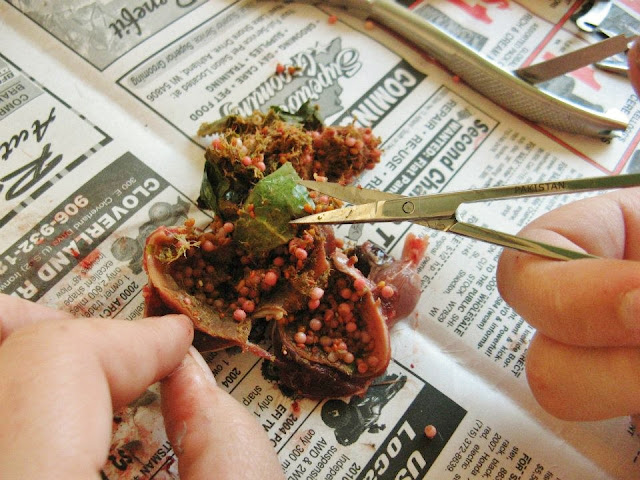Last Meal
Humor me for a moment in imagining the great learning potential of opening up an animal for the first time during taxidermy preparation. The very visceral experience of seeing, and yes, smelling, internal organs is surely something to overcome. But once you courageously embrace the experience, it truly becomes an opportunity to explore the former life, habits, and health of the animal.
Former collections staff were courteous enough to leave me with photographic documentation of an occasion when they opened up a ruffed grouse. I'd like to share a few of their notes and a selection of the most conservative photos with you.
The grouse's stomach was full of seeds, which were being further broken down as part of digestion at the time of the grouse's death. The contents were still fairly recognizable to anyone familiar with a grouse's food sources.
And just like that, we have the grouse's last meal documented!

